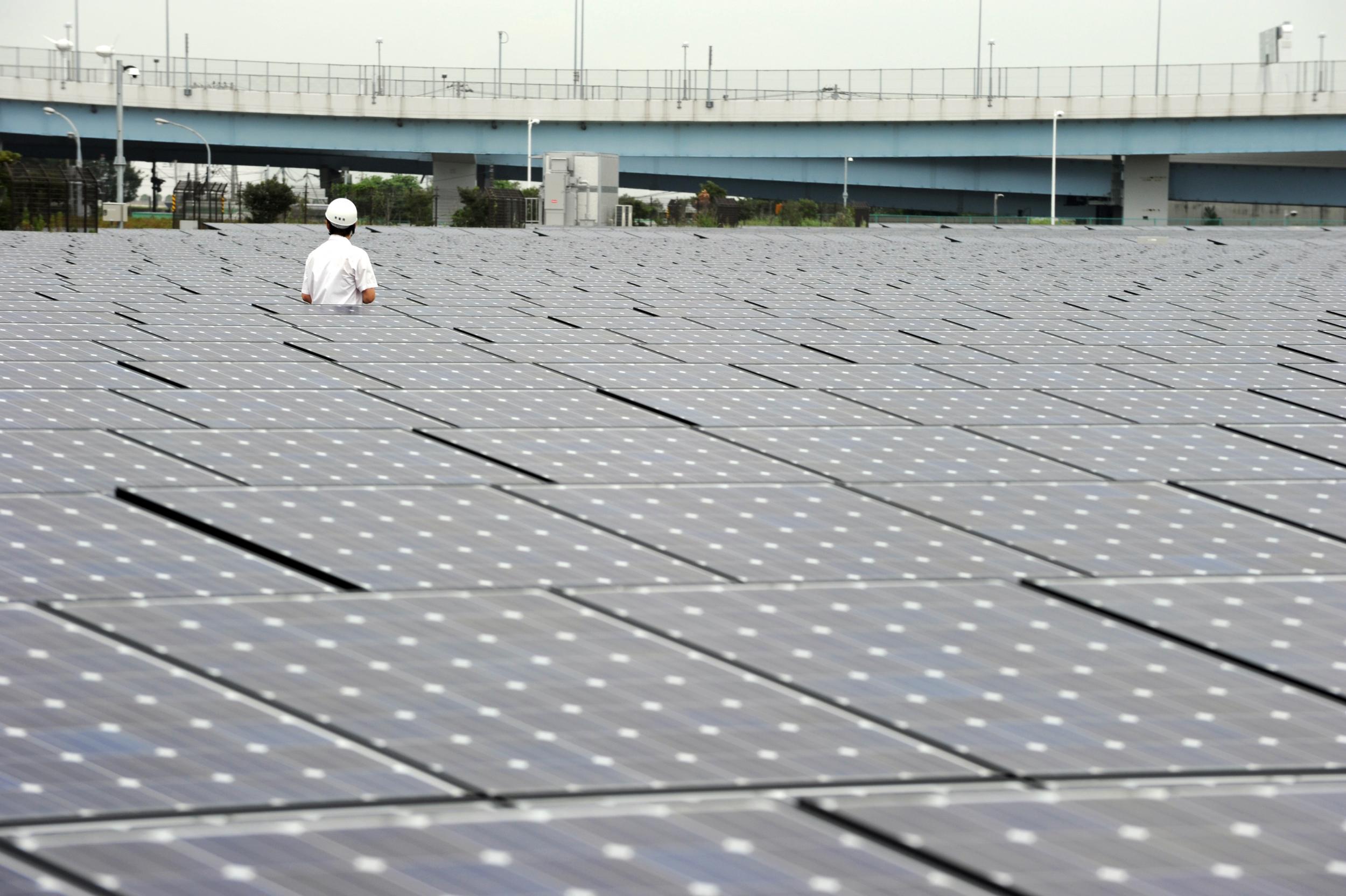Work begins in Japan on the world's biggest floating solar power plant
The new power plant will be more than seven times bigger than a similar one built last year in Hyogo Prefecture

Your support helps us to tell the story
From reproductive rights to climate change to Big Tech, The Independent is on the ground when the story is developing. Whether it's investigating the financials of Elon Musk's pro-Trump PAC or producing our latest documentary, 'The A Word', which shines a light on the American women fighting for reproductive rights, we know how important it is to parse out the facts from the messaging.
At such a critical moment in US history, we need reporters on the ground. Your donation allows us to keep sending journalists to speak to both sides of the story.
The Independent is trusted by Americans across the entire political spectrum. And unlike many other quality news outlets, we choose not to lock Americans out of our reporting and analysis with paywalls. We believe quality journalism should be available to everyone, paid for by those who can afford it.
Your support makes all the difference.Work has begun in Japan on what is expected to be the world's largest 'solar farm', which will one day generate enough energy to power 5,000 homes every year.
In a joint project, electronics manufacturer Kyocera and the Century Tokyo Leasing Corporation began work on the giant solar farm on 21 January at the Yamakura Dam reservoir near Tokyo.
Scheduled to go into operation in 2018, the solar farm will be made up of around 51,000 solar cells, which will float on the surface of the reservoir.
Its manufacturers expect the planet to generate around 16,000 megawatt hours (MWh) a year, while offsetting around 8,170 cubic tones of CO2 annually - equivalent to the CO2 released by the consumption of approximately 19,000 barrels of oil.
Kyocera has previously embarked on similar projects, opening a large floating solar power plant in Hyogo Prefecture in the south of the country last year. However, the new plant at Yamakura will be more than seven times bigger than this one.
Japan's huge population consumes a lot of energy, much of which is generated through imported oil, coal and natural gas. The country invested has heavily in nuclear power in an effort to produce its own energy, but all of the plants were taken offline after the Fukushima disaster in 2011. Some have since been re-started, but they haven't significantly lessened Japan's reliance on foreign power.
Japan is densely-populated and mountainous, and the large amounts of space needed to create renewable energy projects are scarce. Using otherwise unused space on the surface of the country's many lakes and reservoirs, however, could be a way to get around this problem.
The solution may have been borne out of neccessity, but there's a number of advantages to building solar farms on water. It's much easier to attach the panels to each other and push them out from the bank than it is to assemble and elevate them on the land, and Kyocera says the panels will shade the water on the reservoir, significantly reducing evaporation and algae growth.
According to World Bank data, around 94 per cent of Japan's energy was imported from other countries in 2013 - by comparison, only 43 per cent of the UK's energy was imported in the same year.
If Japan wants to decrease its reliance on other nations for energy, more floating power stations could be in order.
Read more on solar panels
Join our commenting forum
Join thought-provoking conversations, follow other Independent readers and see their replies
0Comments